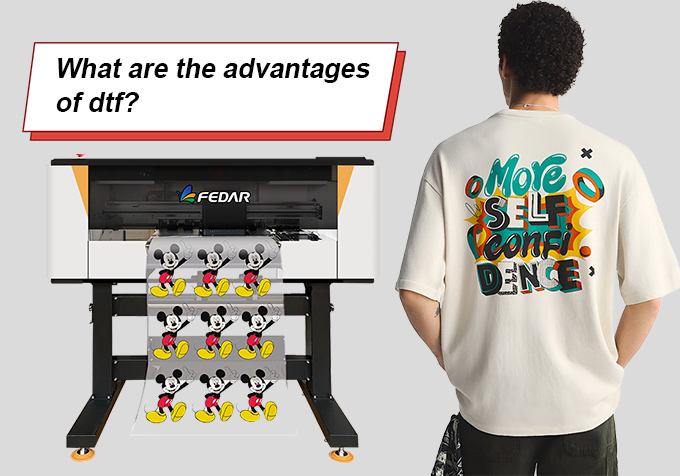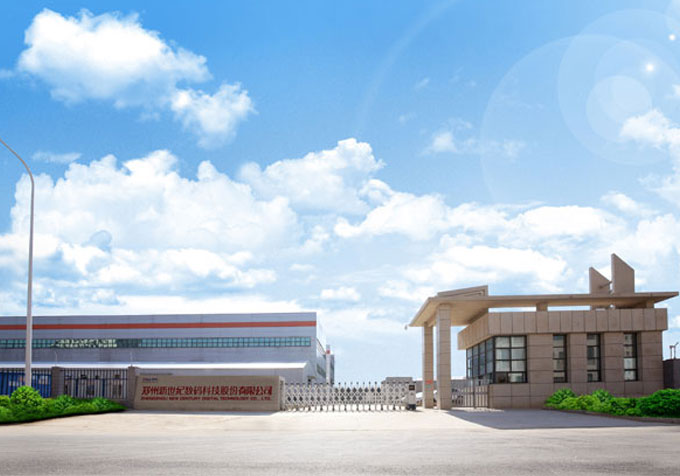23
Sep
Confused between DTF and DTG? Learn the advantages of DTF in this comparative analysis!
All of us want to be limitless and versatile. The customization industry thrives on its ability to produce new designs quickly. DTF printing offers a competitive edge over other printing methods because of its flexibility, versatility, and cost efficiency. Moreover, DTF printing doesn’t limit you with colors and is more eco-friendly than other printing methods like DTG (direct-to-garment) or screen printing. This article explores the advantages of direct-to-film printing and compares it with other printing methods.
DTF means direct-to-film, a printing technique to customize items such as T-shirts, Pens, etc. Firstly, the design is printed onto a special DTF film. After that, the print is transferred to the receiving material using a heat press. An essential material used in this process is DTF powder which acts as an adhesive between the ink and the fabric.
DTF printing involves the use of Inkjet printers with specially designed textile inks. This printing technique has become particularly popular in the custom T-shirt business because of its affordability. It produces high-quality, durable, and vibrant prints. The flexibility DTF offers makes it preferable over DTG and screen-printing.
DTF printing has proven to be a game-changer in the custom T-shirt industry, making a business versatile and efficient. DTF offers the following advantages which make it better than other methods of printing:
DTF is suitable for multiple materials like cotton, polyester, nylon, and leather without color limitation. This gives it an advantage over other methods like sublimation or DTG. Moreover, direct-to-film printing can be done on materials other than textiles. Whether it be plastics, wood, glass, or metals; everything can be beautifully customized using this technique.
DTF saves you time because it doesn’t require any pre-processing. Where DTG can get frustrating with the pre-treatment and drying time, DTF is a seamless process. The powder adhesive makes a strong bond with the fabrics so there’s no need for pre-treatment.
DTF produces long-lasting prints that don’t fade or break after multiple washes. The anti-stretch properties of DTF inks ensure the prints don’t crack with heavy use. While DTG produces soft, embedded prints, the durability DTF provides makes it a more popular choice.
DTF is the most cost-efficient printing method for small and medium-sized businesses. It has a lower cost of entry than screen printing and direct-to-garment printing. Moreover, DTF requires only 40% white ink, on the other hand, DTG requires 200%. White ink is expensive because it contains titanium oxide. Reducing white ink usage reduces your production cost.
A DTF printer can be easily set up with minimum investment. Anyone can operate a DTF printer and a heat press with minimal effort. DTF prints can be printed on hard-to-reach surfaces with ease. Furthermore, film prints give you more control and flexibility because you can print exactly where you want.
Since DTF is a fast and easy process; it doesn’t need any pre-treatment or preparation so it significantly decreases your production time. DTF printing is ideal for small orders because it makes them profitable.
While screen printing is limited to simple designs, you can produce detailed and intricate designs using DTF. Screen printing requires more time and is more prone to ink smudges, but DTF produces crisp and sharp designs each time.
You’re going to need the following supplies for DTF printing:
Inkjet printer modified for DTF printing:
Get a good quality inkjet printer modified for DTF printing. A high-quality printer will save energy and time producing perfect results each time.
Special DTF inks:
Get high-quality DTF textile inks from a reputable vendor. Ensure your inks have elastic properties so the prints don’t crack with usage.
DTF film:
DTF films are made of PET and have a special coating on them that facilitates printing. Get films that are compatible with your printer and ink type.
DTF powder:
The DTF powder also known as heat-melt powder acts as an adhesive between the inks and the cotton fibres. It bonds the ink permanently with the fabric.
RIP software:
A good quality RIP software is needed to print CMYK and white-colored layers. The DTF printers are made by modifying inkjet printers, they need special instructions from your computer.
Heat press:
Get a durable heat press with an upper plate that lowers vertically, it makes the DTF curing process much easier.
DTF printing involves three simple and easy steps:
First, a PET film is put in the DTF printer and the colored design is printed. After the first layer, the printer uses white ink to cover the design. Next, heat melt powder is applied evenly on the entire design. After removing all excessive powder, the film is heated in a heat press or curing oven to prepare it for the fabric.
Firstly, the fabric is heat-pressed for 2 to 5 seconds to remove moisture and creases. After that, the preheated film is placed on the fabric and put under the heat press again. It takes about 15 to 20 seconds in the heat press at 165°C to successfully transfer the print.
After the print is transferred, the film is going to be aside to be peeled off. When peeling, the film is carefully removed and the fabric is pressed again in the heat press for one last time. DTF printed fabric is packed and shipped to customers.
DTF printing has revolutionized the digital printing scene. It helps businesses produce multiple designs in a very cost and time-effective way. It increases the production capacity as well as the range for many businesses. DTF printing is affordable, fast, and durable, a trio we don’t find anywhere else. Keep learning and upgrading, and stay competitive! Good Luck!
If there's anything we can do to further showcase machines' features, please let us know.
Email: sale@fedar.net
Whatsapp: +86 15515715397
Our company has over 30 models of printers with independent intellectual property rights and patents. Marketed under the esteemed brands of Skycolor, Stormjet, and Fedar brands, these printers cover a wide range, including digital textile printers, UV printers, eco-solvent printers and more. Known for their exceptional quality and performance.
